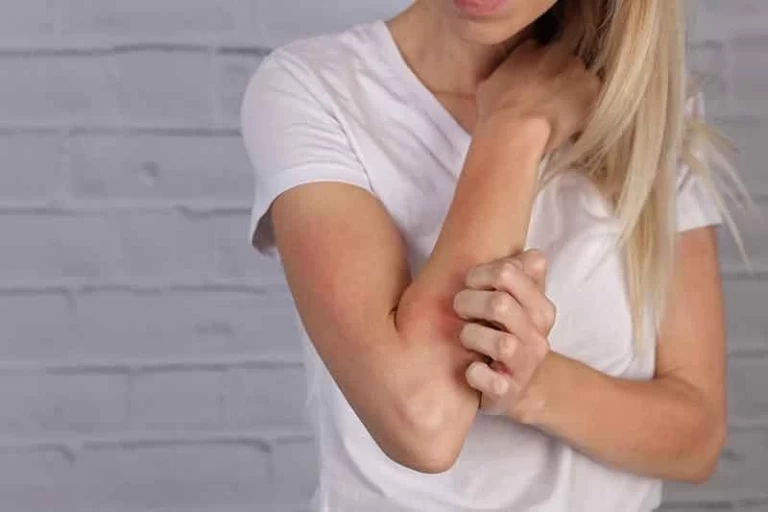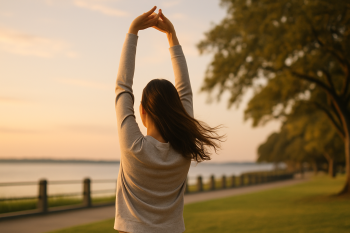
Your brachioradialis is the muscle located in the lower part of your arm and this muscle helps your arm bent at the elbow. Brachioradial pruritus is a nerve disorder that typically affects both arms, but it may occur in only one for some.
Brachioradial pruritus is more common in women, affecting women three times more than men, and in those with light skin tones between the ages of 45 to 65.
This disorder causes stinging, itching, or tingling sensations in the area of the outer forearm with more rare cases causing the urge to scratch to spread to other parts of the person’s body: lower legs, neck, or shoulders.
What Causes Brachioradial Pruritus?
Brachioradial pruritus occurs when there is injury or irritation to the nerve roots – something to keep in mind when seeking brachioradial pruritus relief. The two causes have been linked to brachioradial pruritus:
-
Sun Exposure - There is an increased chance of developing brachioradial pruritus for those who enjoy being outside for long periods of time and receive frequent exposure to ultraviolet (UV) radiation from the sun. Chronic sun exposure can damage the sensory nerves in the person’s skin and be exposed to the sun can make brachioradial pruritus symptoms worse. The person affected could see a decrease in the frequency of their symptoms, or have no symptoms, during the months of winter or autumn.
- Spinal Troubles - When the spine shifts out of proper alignment, the vertebrae can press onto the nerves or soft tissue. The spine may shift due to the natural aging process, the stress placed on the spine, a condition (such as a herniated disk or osteoarthritis), or injury. Compression from misalignment can place pressure onto the nerves that affect your arms, bringing about brachioradial pruritus.
Symptoms of Brachioradial Pruritus and Treatments Available
Brachioradial pruritus can be very irritating and cause bruising, hyperpigmentation (brown marks), and/or hypopigmentation (white marks) if you continue to intensely rub or scratch the affect areas. Symptoms of brachioradial pruritus include the following:
- Intense urge to scratch one or both forearms
- Burning, stinging, or tingling sensations in the arms
- Increase in symptoms due to sun exposure
To help alleviate the symptoms associated with brachioradial pruritus, some topical creams are used to ease the uncomfortable sensations and urges to rub or scratch the affected area. In addition, staying out of sunlight helps calm the symptoms.
Oral medications for brachioradial pruritus may also be taken; however, keep in mind that with all medications there are side effects to be wary of. Common side effects of medications used for brachioradial pruritus relief include:
- Headaches
- Skin rash
- Blurred vision
- Swelling of the face and tongue
- Numbness and tingling in the arms and legs
- Confusion
- Nausea
- Parkinsonism (trouble moving)
- Akathisia (restless and urge to move)
- Inflammation of the nose and throat
The list of side effects goes on and more severe side effects do exist. The medication works by altering the way your body interprets and responds to signals back and forth – allowing the body to ignore the symptoms, not fix them.
Surgery will do the same thing: make unnatural changes to your body to simply ignore or look over these symptoms. While treatment options available look to help reduce the symptoms of brachioradial pruritus, the only way to get proper brachioradial pruritus relief is to find a treatment that helps target the source of your symptoms.
Upper Cervical for Brachioradial Pruritus Relief
When suffering from brachioradial pruritus an upper cervical chiropractor can be very beneficial to finding true brachioradial pruritus relief. What is meant behind true brachioradial pruritus relief is with an upper cervical treatment, your body will change naturally to heal and repair problematic areas that could be causing your brachioradial pruritus.
Upper cervical chiropractors focus on the most important part of your spine: the upper cervical area. The upper cervical spine is located right beneath the base of your skull and protects your brain stem – your body’s bridge for the brain to body communication.
This bridge can be disrupted by an upper cervical misalignment as pressure from misalignment can compress the brain stem, the nerves, and soft tissue within the area.
What is also important to realize is the role your upper cervical spine has over the rest of your spine. The rest of your spine follows the lead of your upper cervical spine.
This means if your upper cervical spine shifts out of alignment, the rest of the spine begins to twist, turn, and tilt in any way it can to keep your head leveled.
When the rest of your spine adjusts itself to follow its lead, other nerves and soft tissue can be compressed down the line.
To achieve brachioradial pruritus relief, the upper cervical chiropractor will make gentle, precise adjustments to your upper cervical spine to release any pressure placed on your brain stem and the nerves affected by it. When pressure is taken off the brain stem, brain to body communication is enhanced allowing your body to begin repairing and healing areas that were injured – including your nerves.
The goal of the upper cervical chiropractor is to only adjust when needed and make proper adjustments until your upper cervical spine is strong enough to hold the correct alignment on its own. The number of adjustments needed depends on the severity and amount of time you have had the misalignment.
If you or a loved one is seeking brachioradial pruritus relief, upper cervical adjustments can help reduce or eliminate symptoms naturally by providing your body the chance it needs to repair and heal affected nerves and removing pressure placed on them.




Leave a comment